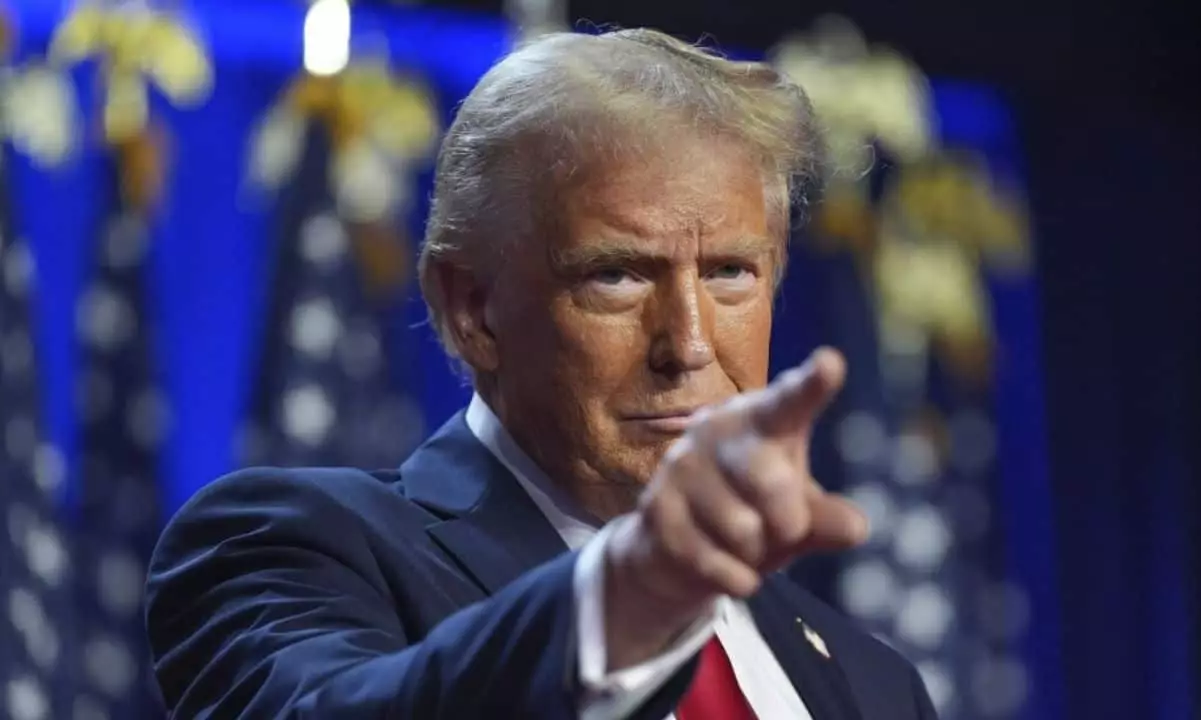In the volatile world of cryptocurrency, the saga of a prominent whale’s investment in the Official Trump ($TRUMP) meme coin serves as a stark reminder of the speculative nature of this digital frontier. What initially looked like a goldmine turned out to be a precarious gamble, culminating in a staggering $207,000 loss within just one hour. Such drastic shifts in value encapsulate both the allure and danger inherent in the meme coin arena, especially when tied to the unpredictable persona of Donald Trump.
On March 23rd, right after Trump’s enthusiastic endorsement on TruthSocial—where he proclaimed, “I LOVE $TRUMP — SO COOL!!!”—the price of the token skyrocketed, touching peaks above $12.25. This immediate turbocharge in trading volume undoubtedly caught the attention of speculative traders, eager to ride the wave of hype without considering the often ephemeral nature of meme currencies. For seasoned investors, the question looms: How could someone invest 5 million USDC, surely aware of the perils, only to withdraw so quickly?
The Token’s Volatility: Speculation Over Substance
This whale’s journey, transitioning from a promising investment to painful liquidation, reflects a broader concern in the cryptocurrency market, especially concerning meme coins. Unlike traditional cryptocurrencies that may have sound technology backing them, meme coins often rely on viral trends and celebrity endorsements for their price surges. Just as fast as enthusiasm can mount, it can plummet, reminiscent of stock market bubbles from yesteryears.
Moreover, this incident casts a shadow over the ethical implications of celebrity endorsements in cryptocurrency. Trump and his family, by launching not one but two meme coins, sought to capitalize on his overwhelming social media influence. Critics argue that such ventures represent a blatant exploitation of his cultural cachet, suggesting that these tokens deliver more spectacle than substance to the crypto landscape. It’s worth questioning the legitimacy of a financial asset that thrives purely on hype, as opposed to foundational value.
Regulatory Ramifications and Future Implications
The post-trading fallout has ignited conversations about the necessary regulations surrounding cryptocurrencies, especially as they intersect with political figures. In response to these concerns, legislation like the proposed MEME Act aims to deter government officials from promoting cryptocurrency ventures that lack oversight and accountability. Advocates for such policies assert that harnessing a public figure’s name without transparent backing should not benefit from the regulatory loopholes that currently categorize meme coins as collectibles.
Yet, the crux remains: regulatory bodies like the SEC have yet to classify meme coins definitively within existing securities regulations. This gray area allows for the proliferation of speculative instruments that could pose risks to uninformed investors looking to cash in on ‘the next big thing.’ It’s not that enthusiasm shouldn’t exist for innovative financial products; rather, the emphasis should be on protecting consumers from instability and reckless speculation fostered by luminaries and influencers alike.
A Cautionary Note for Investors
Ultimately, the $207,000 loss signals not just a personal miscalculation but a broader lesson for prospective investors in the meme coin space. While the lure of quick riches is undeniably attractive, the reality is that such markets are rife with volatility and driven by trends that can dissipate as rapidly as they emerge. The impact of high-profile endorsements, like that of Trump, can elevate assets to dizzying heights, but without substantial backing, they can just as promptly crash. As the crypto landscape continues to evolve, perhaps it would serve investors well to proceed with caution and discernment.


Leave a Reply